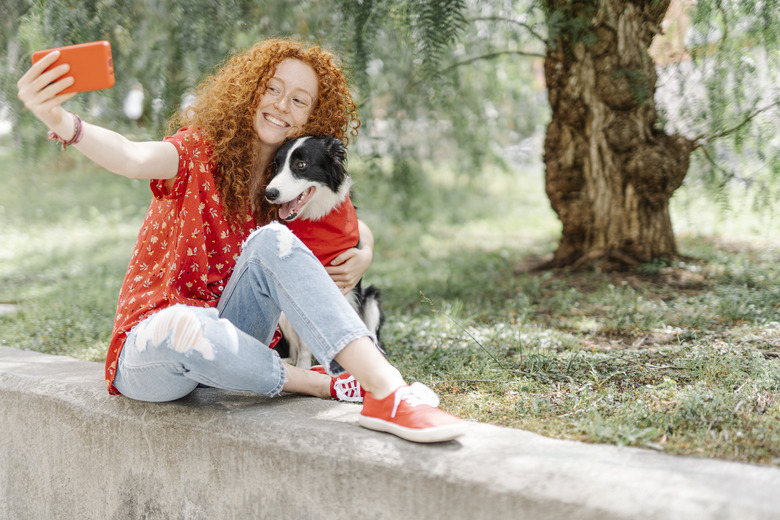6 Tips For Trick-Or-Treating With Your Dog
Do you love celebrating Halloween and going trick-or-treating? Then you might be thinking about taking your dog with you. If you decide to give this a try, here are some ways to make the experience safe and enjoyable for everyone.
Should you take your dog trick-or-treating with you?
Should you take your dog trick-or-treating with you?
While some dogs might like going out on Halloween, others might feel more comfortable at home, so consider your pet's personality.
"It's really not a matter of size or breed. Taking your dog trick-or-treating depends solely on their comfort around large crowds, people wearing costumes, children approaching them, people screaming, etc.," said Roma Sinacori, CPDT-KA, FFCP, CTDI.
Roma advised keeping an eye on your dog's body language too. "It would be a bad idea to take your dog trick-or-treating if they are displaying signs of fear, anxiety, and stress. For instance, if your dog has tension in their face, low tail, ears back, a heavy pant when it is not hot, their commissure pulled back, lip licking, yawning when they aren't tired, avoiding eye contact, or showing the whites of their eyes, or a crouched body, they are uncomfortable and should not join you for trick-or-treating." She recommended watching this Dog Body Language 101 video to learn more.
How to make trick-or-treating safe and fun for your dog
1. Pick a safe costume that your dog won't mind wearing
Dressing up your canine companion for Halloween can make for great photos and memories. Just be sure the costume is made for dogs, fits your pet comfortably, and isn't a safety risk.
Before you buy a costume for your dog, consider if they'd even like it. Some dogs hate being dressed up, and some might need time to get used to wearing little outfits. No matter what, don't force your pet to wear a costume if they don't want to.
2. Pack supplies and dog treats before you head out
Of course, you'll want to bring poop bags to clean up after your dog, but Roma also recommended packing a water bowl and water.
Tasty dog treats can keep your companion energized, happy, and behaving well, and can also help ensure your pet won't go after human treats that aren't good for them, so be sure to pack those as well.
3. Use a dog leash and ID tags
Roma said, "Keeping your dog attached to a leash reduces the risk of them going missing during the festivities, consuming toxic candies or chocolate, and scaring children who are afraid of dogs."
Walking your pet on a leash can help you maintain control, and help keep others safe as well. Roma added, "Even dogs who don't typically show aggression-related behaviors, such as snarling, growling, snapping, or biting, can display these behaviors when experiencing fear, anxiety, and stress. While trick-or-treating may be fun for you and your family, a majority of dogs find crowds, costumes, and excitement very stressful. It is important to know your dog and their limits."
Also, if your pet is microchipped and wears ID tags, it can help ensure you'll be able to find them more easily if they get lost.
4. Use lights and reflective materials at night for you and your dog
If you're going to be venturing out at night, make sure you and your pet will be visible to drivers. Consider looking for pet products, such as leashes, collars, vests, and costumes, that feature reflective materials. You might even find items that light up, or you might opt to carry a flashlight.
5. Prevent your dog from eating Halloween candy
A lot of the candy that trick-or-treaters collect can be harmful to dogs. For example, pets shouldn't consume chocolate or xylitol. And beware of candy wrappers, which your dog might try to eat too.
Stop your canine companion from eating anything off the ground, and don't let them eat treats from strangers — yet another reason to bring dog treats with you.
6. Keep trick-or-treating short and sweet for your dog
Your dog might not want to be out long on, especially if they're older, tire easily, or become tense when they're around too many people or too much action. If you notice that your pet has had enough, it's best to head home.
In summary
In summary
When you're planning on going trick-or-treating with your dog, a few simple Halloween safety tips can help everyone have a great time. Pack dog safe treats, make sure your pet is wearing ID tags, ensure your dog's costume is comfortable, and observe your canine companion's body language to see when they're ready to go home.


